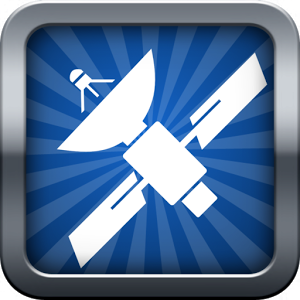

Solar System Explorer will take you on an interactive 3D trip through our solar system. Featuring more than 35 planets, moons, asteroids and the spacecraft that have visited them, you'll have a chance to see a different side of our little corner of the galaxy!
Features exclusive to this full edition:
в?…в?…в?… High resolution 3D solar system HD graphics for the latest phones and tablets
в?…в?…в?… A dedicated tablet mode
в?…в?…в?… Many more spacecraft to explore and learn about, including NASA Dawn, Cassini and Juno
в?…в?…в?… A wealth of information and facts about our solar system
в?…в?…в?… A planet position calculator to find out where the planets were on significant days such as your birthday
The places you'll visit:
в?… The Sun, otherwise known as Sol
в?… Mercury
в?… Venus
в?… Earth and the Moon, also known as Luna
в?… Mars and its tiny moons Deimos and Phobos
в?… Asteroids Ceres and Vesta
в?… Jupiter and its moons Callisto, Europa, Ganymede and Io
в?… Saturn and the moons Mimas, Tethys, Enceladus, Dione, Rhea, Titan and Iapetus
в?… Uranus and its moons Miranda, Umbriel, Ariel, Oberon, Titania
в?… Neptune, the moons Triton and Proteus
в?… The former planet Pluto and its moon Charon
в?… And you'll have a chance to catch up with NASA's Voyager probe on it's lonely journey into the cosmos
There are plenty of facts about each of the places you will visit in the solar system. All of it is available at the touch of a button, thanks to the easy to use and friendly user interface.
Statistics, information and other planet data can presented relative to what you are familiar with on Earth. The solar system is vast and it's easier to grasp facts such as planet Jupiter's mass being equal to about 317 Earths.
Orbital positions and planetary motion in this solar system simulator use a compressed scale, which makes it easier to fit the solar system map onto a screen. The distance between the Sun and gas giant planets is huge. Shrinking the planet orbits diagram to fit your screen, without compressing it, would make the inner planets so tiny and so close to the Sun that they would be invisible.
Only the Voyager and Pioneer probes have visited the gas giants of the outer solar system, planet Neptune and planet Uranus. The moons of these worlds are "tidally-locked" like our Moon. Telescopes and passing NASA spacecraft have only taken photos of the sides of theses moon that face away from the planet, just as we cannot photograph the "dark side" of Luna from Earth. Because the hidden side has not been visible to space agency spacecraft, it has been estimated from geographic features that are visible.
While there may only be eight planets in our solar system now, Pluto is still included for your viewing pleasure.
Solar Explorer feature summary:
в?… Ideal educational introduction to the solar system for kids
в?… Virtual solar system model with a planet orbit diagram and solar system orbit simulator
в?… See the smallest and largest solar system objects including planets, moons and asteroids
в?… Interesting moon and planet fact discovery, such as planet weights (mass)
в?… Learn the solar system, moon and planet systems
в?… High quality 3D solar system graphics
в?… The planet surface simulation constructed from real photos taken by telescopes or NASA spacecraft
в?… An awesome soundtrack to accompany you on your journey
Solar System Explorer: the handy solar system chart in your pocket.







